Live resin and distillate are similar looking, but they offer distinct advantages and characteristics. Let’s dive deep into a comprehensive breakdown of the differences. Many people ask me about the differences, especially when discussing carts.
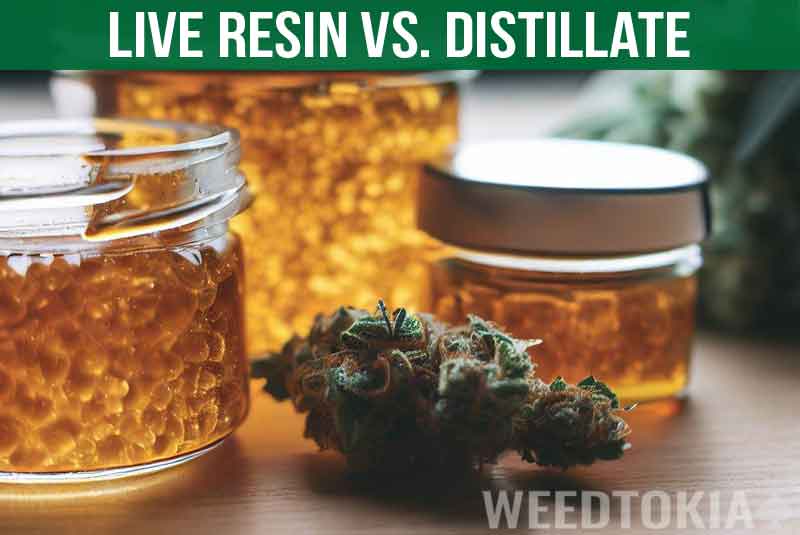
Below we’ll discuss live resin vs distillate in-depth, and if you’re looking for carts, we’ll help you choose the right option for you.
Table of Contents
Key Differences Between Live Resin and Distillate
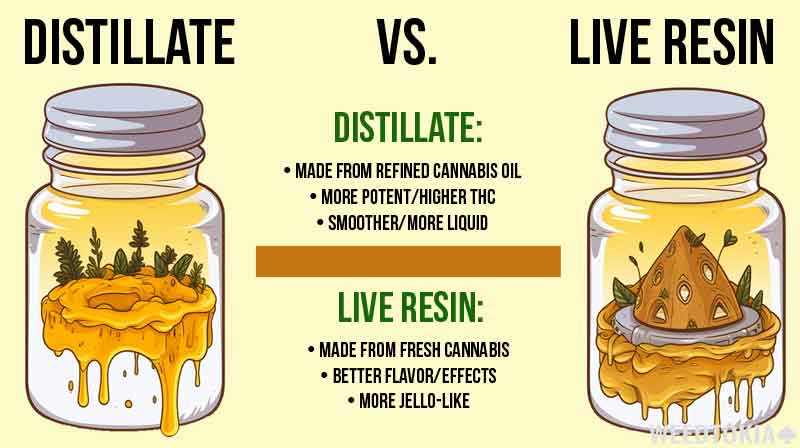
The key differences are terpene levels, THC levels, production, and flavor. Live resin is made from fresh cannabis and has more terpenes that give flavor and aroma. Distillates are made from refined cannabis oil and usually have higher THC content.
Let’s go more in-depth about the differences between each.
Appearance Differences
To the untrained eye, live resin and distillate can appear the same. You can find both at your local dispensary and expect to pay 2-3x more than you would for cannabis per gram.
They are similar looking, but once you look up close (or touch them), you’ll be able to recognize which is which.
- Live Resin: A bit harder and jello-like, it’s easy to mold and lace your joints with it easily. It has a vibrant orange color.
- Distillate: A lot more liquid-like with a yellowish color. The concentrate is smoother than Live Resin.
Production Differences
Both are made in laboratories, but Distillate can actually be made at home with a bit of effort, while Live Resin is almost impossible to make outside a professional setting.
- Live Resin: Made from fresh cannabis flower. The flowers are usually frozen so they are easier to process, and Live Resin is made in professional labs. It undergoes quality testing and includes a few extra chemicals to add to the flavor.
- Distillate: Made from refined cannabis oil. It’s actually possible to make distillate at home using ethanol and CO2. The distillate at your dispensary was made in a lab using multiple purification techniques.
THC Contents/Aroma Differences
If you want to get high, Distillate beats Live Resin because it’s more potent with higher THC content.
- Live Resin: The production process gives it a more potent terpene and cannabinoid profile. It does have THC that can get you high, but not on the level of Distillate. Live Resin smells better with a superior aroma profile.
- Distillate: The THC content often surpasses 90% so it can get a person stoned easily. The aroma profile is not as appealing and it has a pretty neutral odor – most terpenes are removed during the distillation process. For people who only want to get stoned, this is a superior choice.
Consumption Differences
Both can be consumed using Dab Rigs and vape pens, but Distillate has an edge because it’s easier to insert in edibles. For pure aroma, Live Resin wins.
- Live Resin: Most commonly consumed using Dab Rigs. People who love a strong and beautiful aroma profile prefer Live Resin because it exudes powerful scents. It can also be vaporized and placed inside tiny vape pens. Joints can also be laced with small amounts of it. Remember that because live resin has not been decarboxylated, it must be smoked or vaped to ensure THC activation.
- Distillate: Can be consumed using Dab Rigs and vape pens, but it’s more liquid-like, so it’s perfect for making edibles. It can be inserted in cookies and other edibles. It can even be fused with alcohol.
Distillate vs. Live Resin Cart – Which One Should You Choose?
Live resin carts and distillate carts have some key similarities and differences. Let’s dive deeper into them.
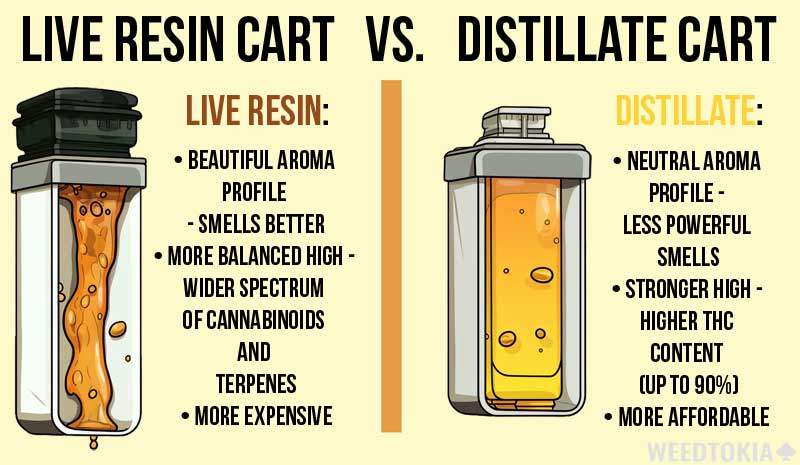
Live Resin Cartridges
Get ready to shell out more money for a Live Resin cart because the production process is more advanced. Live Resin is almost exclusively made in a lab with flash-frozen cannabis flowers.
The process leaves the majority of terpenes and cannabinoids, producing a strong aroma profile. For stoners who love a potent smell, this is a superior choice. They get to experience unique flavors and soak in the beautiful smell.
Don’t forget that Live Resin is made from fresh cannabis flowers, while Distillate is made from existing cannabis oil.
Distillate Cartridges
Distillate carts are more affordable and provide a superior high for stoners. If you want to get the strongest high, get yourself a Distillate cartridge.
It’s made from cannabis oil that was already processed in advance. You shouldn’t expect to get a strong aroma out of it, because the terpenes were removed in the production process. So expect a neutral aroma.
The potency is super high and can exceed 90% THC content in some cases.
A Deep Dive Into Live Resins and Distillate
First, we’re going to start with everything you need to know about live resin. We’ll start with what live resin is and how it’s made. Then we’ll dive deeper into more details and finally look at the pros and cons of live resin for an unbiased fact-based comparison.
Then, we’ll move right into everything you need to know about distillate. You will find out what distillate is and how distillate is made, in addition to an in-depth look at the distillation process. Before moving on, you’ll get the chance to look over the pros and cons of distillate.
When we’re finished, you will know all the interesting specifics that make live resin different from distillate, and you’ll walk away with some extra insider knowledge you can use to impress your friends, family, or coworkers. You may even be able to learn one or two more facts about live resin or distillates than your local budtender. Just be sure not to rub it in now that you have the know-how to be a know-it-all.
Now, before we start to get into the facts about live resin and distillate, it’s important to understand that both of these are considered cannabis concentrates. By gaining a better understanding of what a cannabis concentrate is and how it relates respectively to live resin and distillate ahead of time, we will be able to appropriately set the stage for other points we’ll mention later in the discussion.
Cannabis Concentrates Explained
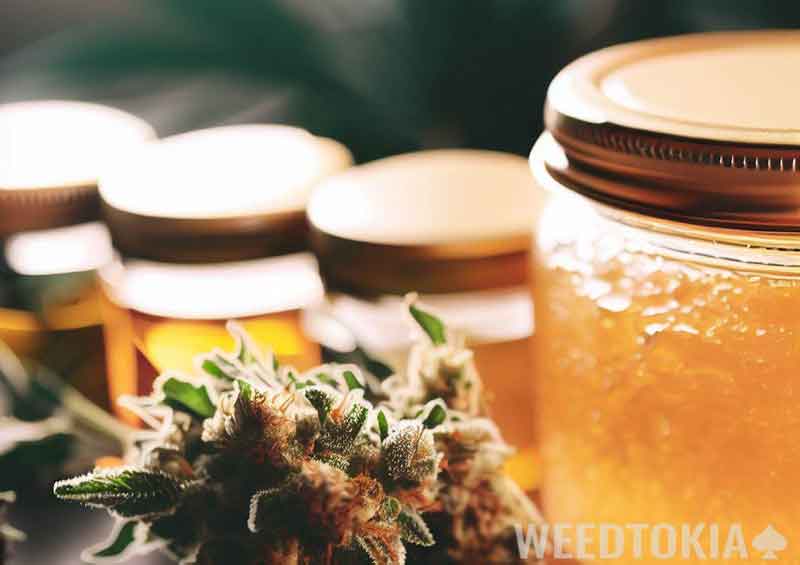
As we mentioned above, live resin and distillate are both cannabis concentrates. You will sometimes hear the words cannabis extract and cannabis concentrate used interchangeably, but technically they are different. A cannabis extract is any sort of extract from cannabis, whether that be cannabinoids like THC and CBD, terpenes like myrcene or linalool, or flavonoids like cannflavin A or cannflavin B. Anything extracted from cannabis is considered a cannabis extract.
In comparison, a cannabis concentrate is a specifically defined end-product that is created through the process of cannabis extraction, like live resin and distillate, as well as wax, shatter, budder, and other types of concentrates. Therefore, a cannabis concentrate is technically a cannabis extract. At the same time, a cannabis tincture or oral cannabis oil are also cannabis extracts because their ingredients were sourced using cannabis extraction methods.
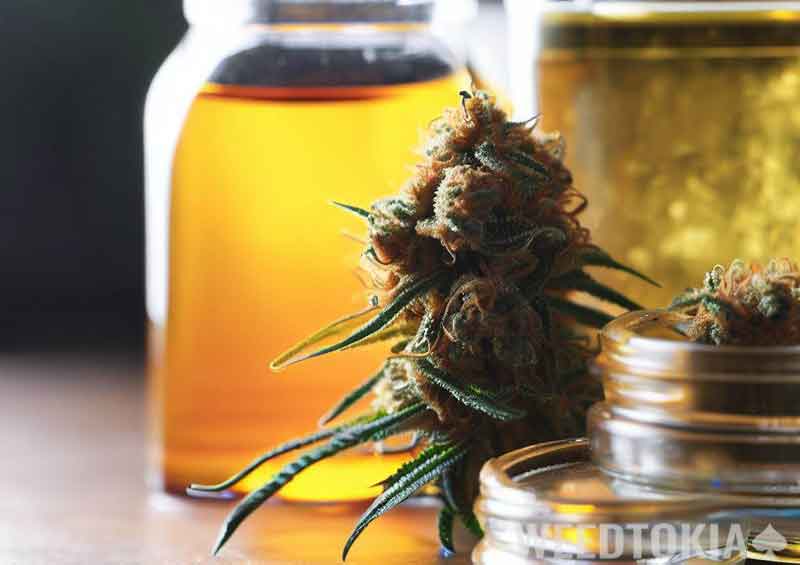
The easiest way to understand the difference between cannabis extracts and cannabis concentrates is to know that cannabis extraction produces cannabis extracts. Those extracts are then used to make other cannabis products like cannabis concentrates, but they can also be used to make edibles, tinctures, topicals, and oils. Concentrates are just one of the many products that are produced from cannabis extracts, and live resin and distillate are simply two different types of cannabis concentrates.
Live Resin Explained
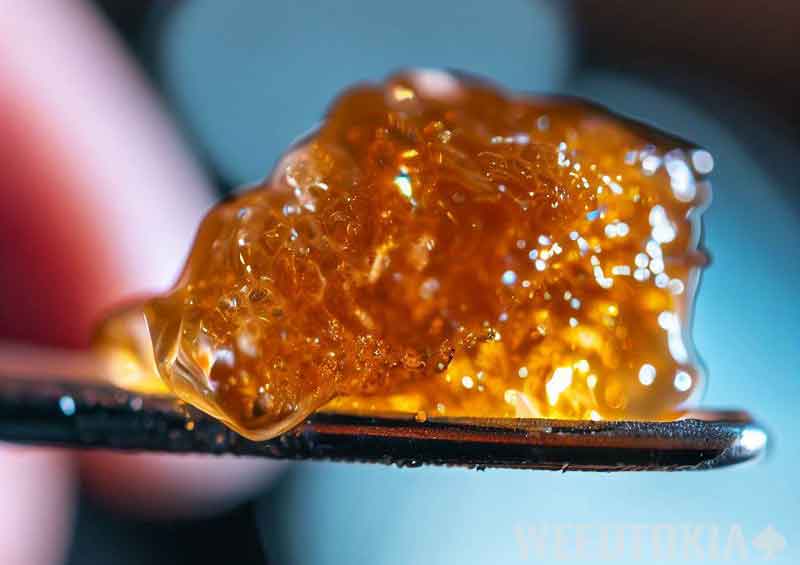
Well, know we know that live resin is a cannabis concentrate, but what defines a concentrate as live resin? Concentrates are often named after their appearance and texture. The appearance and texture of a concentrate are determined by a multitude of variables.
These variables include everything from the initial extraction method, the solvents that may have been used during the extraction process, and the types of extraction equipment that were involved. The final texture and appearance of a concentrate are also affected if there are any secondary extraction processes used to create the final concentrate.
Finally, the quality of the cannabis material used for initial extraction is also a major variable that influences the characteristics of a concentrate. In fact, the starting material used for extraction is the sole factor that makes a concentrate defined as live resin.
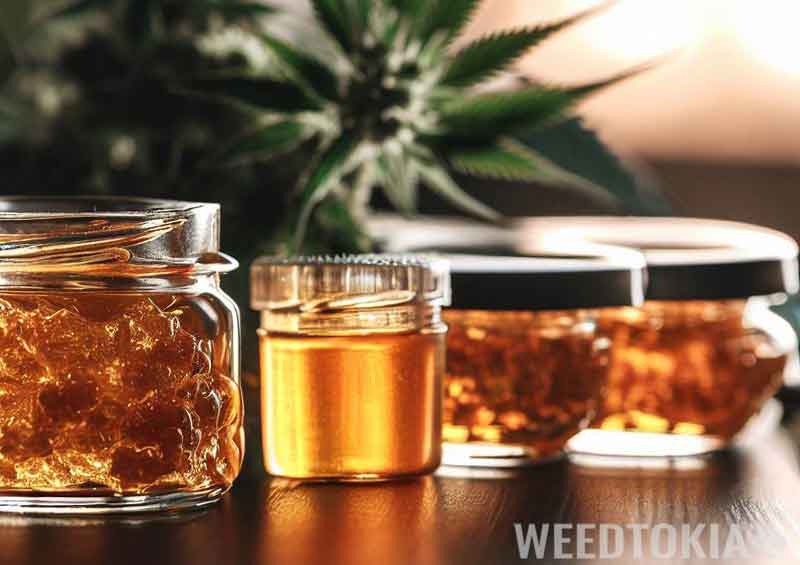
Live resin is a cannabis concentrate that was extracted from either live cannabis plants or plants that were freshly frozen immediately after being harvested. Extraction using live cannabis plants isn’t as common as using frozen cannabis plants, but both methods produce live resin.
Because the starting material for the extraction process begins with live plant material, the final concentrate product is then considered a live resin. This is the same when the extraction process begins with cannabis plant material that is frozen because the plants get frozen alive, which brings us to our next topic.
How Is Live Resin Made?
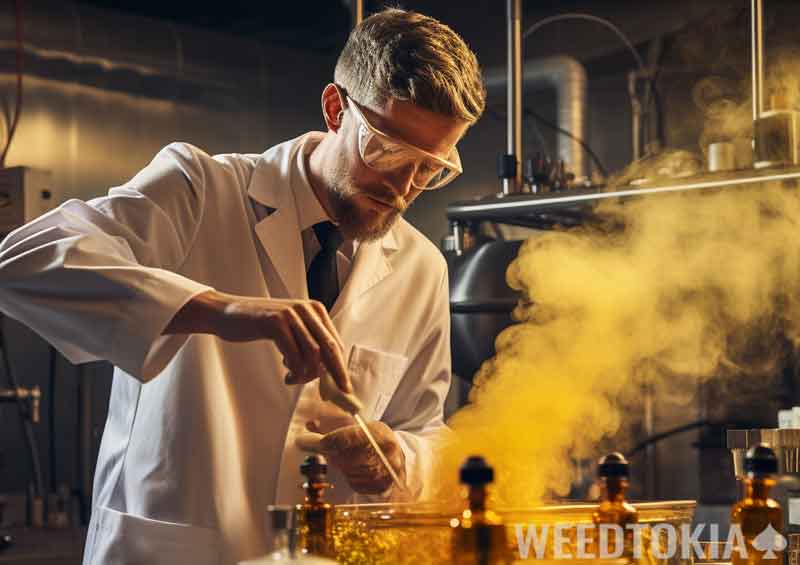
We’ve at least established that live resin is made using live or freshly frozen cannabis buds or other cannabis material, but did you know cannabis cultivators and producers were freezing plants alive on their farms after harvesting? It’s an interesting concept that a lot of people aren’t aware of, but it’s actually pretty commonplace in the worlds of both agriculture and medicine.
Making live resin starts at the farm. Plants are harvested and immediately undergo a flash-freezing process before being stored for shipment or even shipped off right away. Live plants that are harvested and not frozen can be used to make live resin, but this isn’t a common practice because of how immediate extraction would need to begin to keep all the cannabinoids, terpenes, and other plant compounds intact.
By freezing the cannabis material as soon as it is harvested, it allows all of the living molecules of the plant to be frozen in time. This way, every live compound the plant produces is preserved in time by the freezing process, and that’s what gives resin made from this sort of cannabis plant material a designation of being ‘live’ resin.
With the only variable defining a concentrate as live resin being to start the extraction process with cannabis material that was freshly frozen, live resin is made using the same extraction equipment and processes as other cannabis concentrates. This usually includes the use of common extraction solvents like CO2, butane, ethanol, or propane.
Key Benefits Of Live Resin

There are a few different benefits of live resin. Almost all of them are a result of the preservation of compounds involved in the freezing process. You see, the benefits of cannabis, in general, rely on the quantity and quality of the compounds it produces.
Yes, this does include the cannabinoids you’re probably most familiar with, like THC and CBD, or even CBC. However, It also includes the terpenes and flavonoids of the plant. Terpenes and flavonoids are both found to be beneficial for a long list of medical reasons, in addition to being a part of the consumer experience that recreational consumers are used to getting from cannabis.
The biggest benefit of live resin comes from this preservation of compounds. A lot of terpenes, flavonoids, and cannabinoids evaporate, degrade, or change at a molecular level during the traditional method of drying and curing cannabis.
Hang drying can take anywhere between 5 and 15 days, followed by another 15 to 30 days or more of curing, before it is usually ready to be shipped to dispensaries for sale or sent to extraction labs to be extracted and turned into products like concentrates.
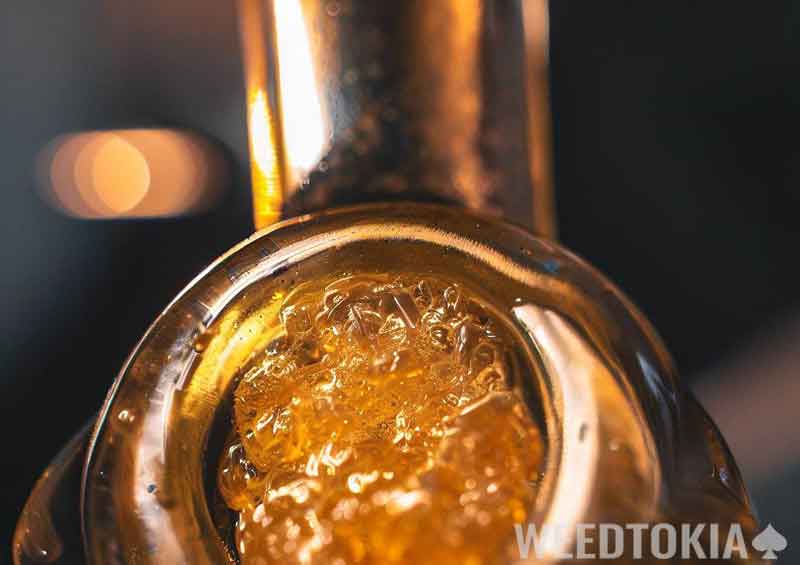
Freezing the plant material at the time of harvest skips all of those timely steps. In doing so, the cannabinoids and other compounds don’t go through the same processes of evaporation, degradation, or molecular changes that they would normally undergo during traditional drying and curing methods.
The result of the flash-freezing process is preserving all of those compounds. Then, when the frozen plant material is used for extraction, it contains all of the plant’s original compound profiles to be extracted. Because there are more compounds in the plant source material at the time of extraction, one of the biggest benefits of live resin is being a concentrate with high amounts of cannabinoids, terpenes, and flavonoids
On top of live resin having high amounts of valuable compounds, flash-freezing the plant source material also stops those compounds from degrading. Having no time to degrade keeps the quality of the cannabinoids, terpenes, and flavonoids at roughly the same levels the cannabis plant had produced when it was harvested and frozen. The increased quality of compounds is another major benefit of live resin.
Live Resin Uses

The benefits of a product usually determine what it is used for, and the same goes for live resin. Being a concentrate with high potency, thanks to starting with a high amount of cannabinoids, live resin is used for different purposes. All of these purposes depend on your intended outcome and include reasons for both medical and adult use.
Live resin is often consumed for medical reasons. The high concentrations of cannabinoids like THC or CBD provide people with powerful medicinal effects. The high potency of live resin products gives people highly concentrated doses of cannabinoids without having to consume a lot of product. This makes live resin a good choice for medical patients who need high doses of cannabinoids to reach the right level of symptom relief.
Live resin is also used by medical patients for its rapid onset of effects. Effects from consuming live resin begin almost immediately but can take up to 15 minutes for some people to feel fully affected. With effects kicking in so fast, medical patients get relief from their symptoms like pain faster than some other cannabis products.
Having a reputation of high potency and fast onset of effects are the same reasons live resin is used for recreational purposes. Being so potent obviously gives recreational consumers a powerful high, but the quick onset of effects gives consumers that high even faster than some other methods of consuming cannabis.
How Do You Consume Live Resin?
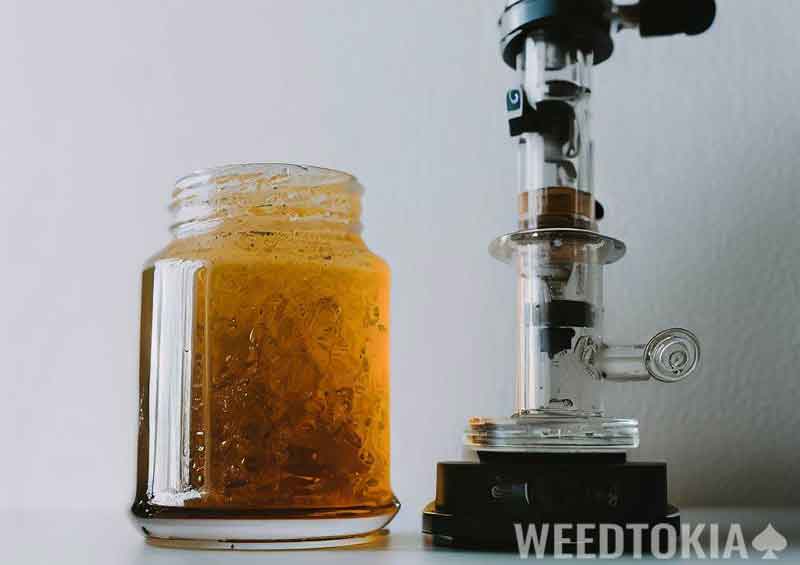
Live resin is inhaled and consumed in the same ways you would consume other cannabis concentrates. You can use a glass pipe made for concentrates, classic torch and rig dab sets, electronic dab rigs, or even just add it to your cannabis flower and smoke it together.
Live resin is a sticky product, just like other concentrates, so using a tool designed for dabbing is common practice for handling it without making a mess. Using a live resin cartridge is another way to consume live resin without getting messy, and it’s much more convenient and discreet than having to plug in your e-nail or needing to use a blow torch to heat your dab rig up.
Live Resin Cartridges Explained
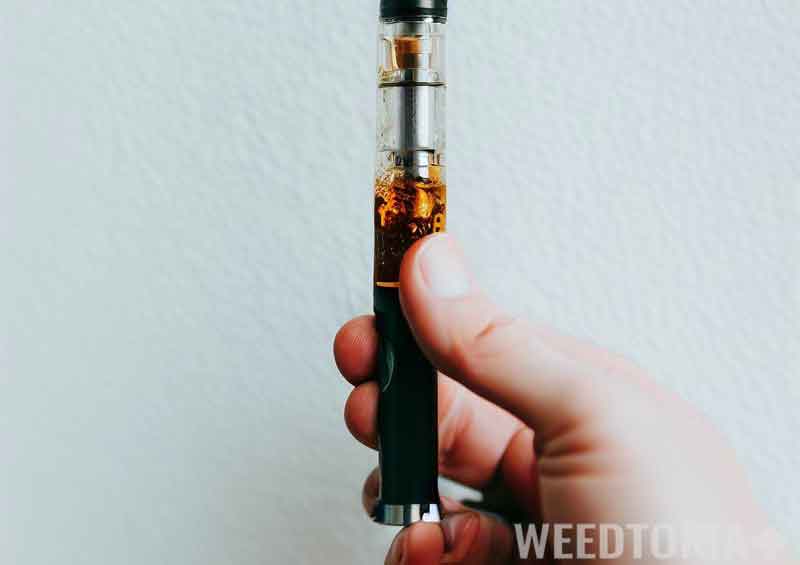
A live resin cartridge is what it sounds like. It’s a cartridge full of live resin that you can use with a vape pen or another vaporizer device that might use cartridges. You can find live resin cartridges at most dispensaries.
They are going to come in standard .510 threads, which are one of the most common size threads for vape pens. They may come in other size threads, so just be sure to know the size of your vape pen before buying so you don’t accidentally get the wrong one.
Why Is Live Resin More Expensive?
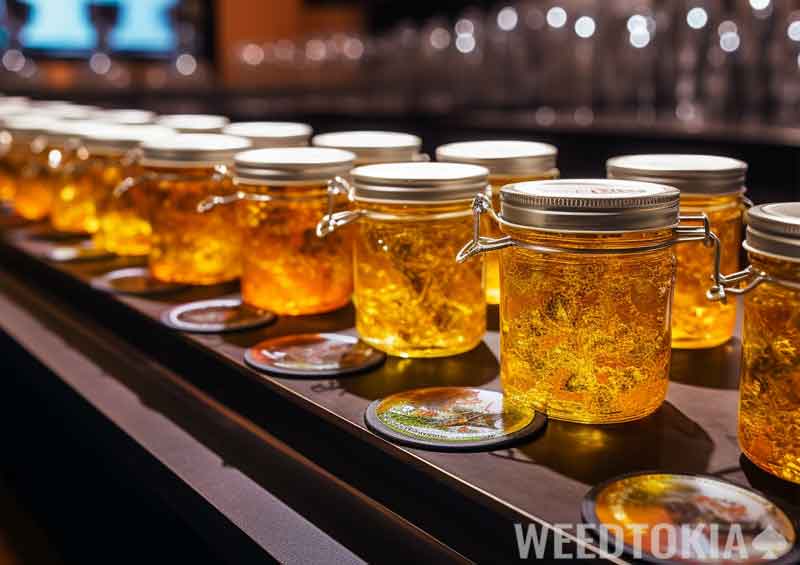
Live resin can be more expensive than other concentrates, but not always. The reason live resin can cost more is because of the extra costs involved with freezing, storing, and shipping the frozen cannabis material. Traditional cannabis drying and curing methods don’t have all of these extra costs, but they lose value by losing cannabinoids, terpenes, and flavonoids during those processes.
Live resin maintains its value since freezing preserves the cannabinoids, terpenes, and flavonoids, giving you more of these compounds in your final product. So really, you could say that live resin isn’t necessarily more expensive than other concentrates but costs more because you get more.
Not only do you get more, but you also get higher-quality compounds. Remember, preserving the cannabis by freezing it also stops the compounds from degrading to a lower quality. The phrase, “You get what you pay for, “isn’t famous for not being true. With live resin, you may pay more, but you also get top-quality cannabinoids and other compounds, and more of them.
When choosing the right cannabis concentrate for you, it’s important to know the pros and cons.
Live Resin Pros
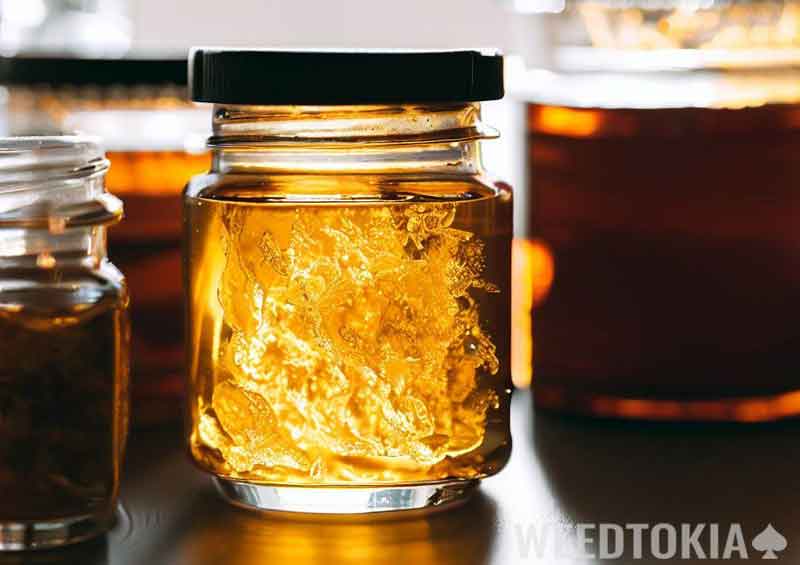
The pros of live resin really fall back on the quantity and quality of the cannabinoids, terpenes, and flavonoids in the product. All of these compounds have their own medicinal and recreational benefits. Preserving them immediately after harvest by freezing them gives live resin the pros of powerful potency and fast-acting effects.
The preservation of terpenes and flavonoids also make for a product with excellent smells and tastes, which makes more pros of live resin that both medical patients and recreational consumers can benefit from.
Live Resin Cons
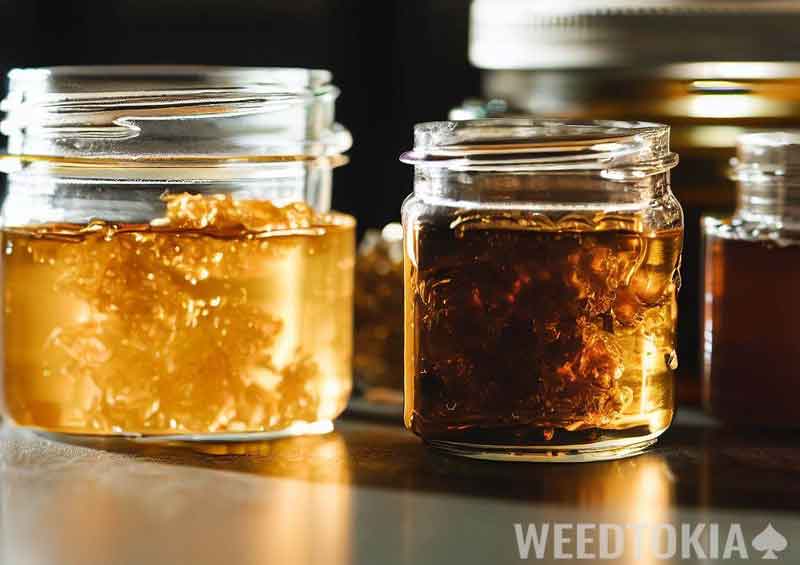
The cons of live resin are more on the cost side because it can sometimes be more expensive than other concentrates. However, we discussed how you get what you pay for when it comes to concentrates, and live resin does have that balance when comparing cost and value.
Another potential con of live resin for some people is that live resin is still made using solvents during the extraction process. Although extraction solvents are approved for use and generally considered safe, some consumers just prefer concentrates that are made without using solvents. If this is you, then live resin may not be for you.
Distillate Explained
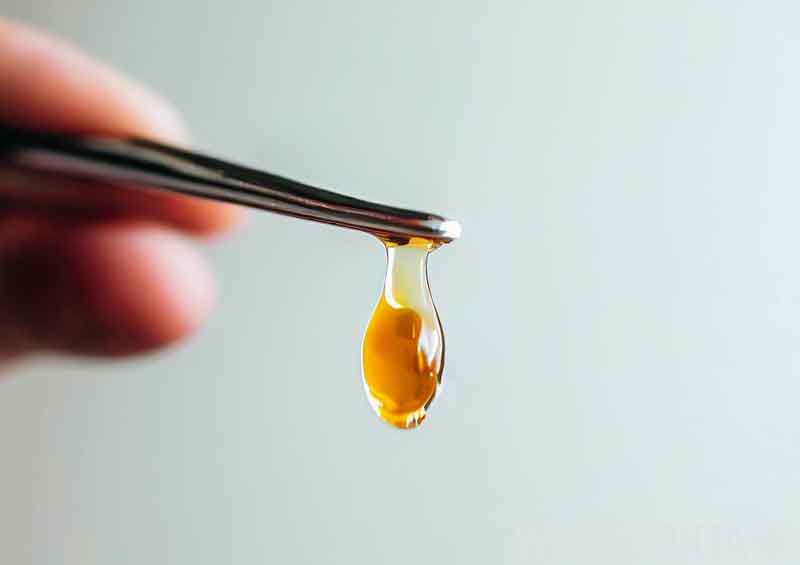
Now let’s dive into everything you need to know about distillate! Distillate is another type of cannabis concentrate. Most concentrates like wax, shatter, or budder are defined by their appearance and texture, which can be modified depending on the many different variables we previously discussed about extracting concentrates.
One of those variables was the use of any secondary extraction processes to create the final concentrate product. Distillate is a concentrate that specifically undergoes a secondary distillation process after the initial extraction has been completed.
As if cannabis extraction itself wasn’t already a complex process of scientific engineering, secondary distillation adds several more layers of science into the formula. At the same time, this formula adds up to cannabis distillate having some very unique characteristics when compared to other concentrates like live resin.
How is Distillate Made?
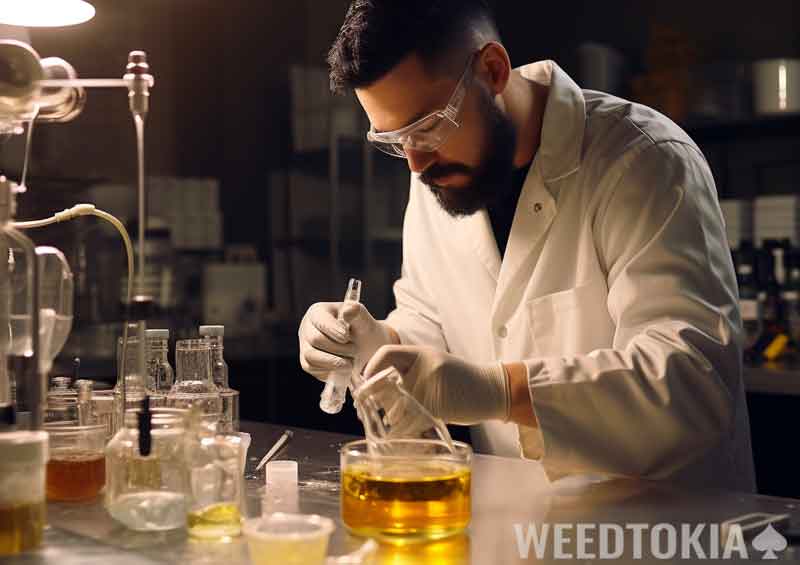
Let’s take a closer look into those scientific layers of that formula to see what makes distillate different from other concentrates. As with most other cannabis concentrates, extraction begins with cannabis plant material, which is usually flower, trim, or a combination of both. The compounds are then extracted from the cannabis plant material using a solvent like CO2, butane, ethanol, or propane.
This process of extraction using solvents is completed using a wide range of different extraction equipment, extraction methods, procedures, and even temperature and pressure control settings that extractors have to choose from. Some extractors are choosing to make distillate because of the control it adds to the final extracted product and because of the added value it can bring to their final product, which we will talk more about a little later.
So first, the cannabis plant material gets extracted and the extractor is left with a cannabis extract. This extract then gets moved onto the secondary extraction process of distillation to make a final distillate product. Remember, this secondary extraction process of distillation is the sole factor that defines a concentrate as a distillate.
How Does Cannabis Distillation Work?
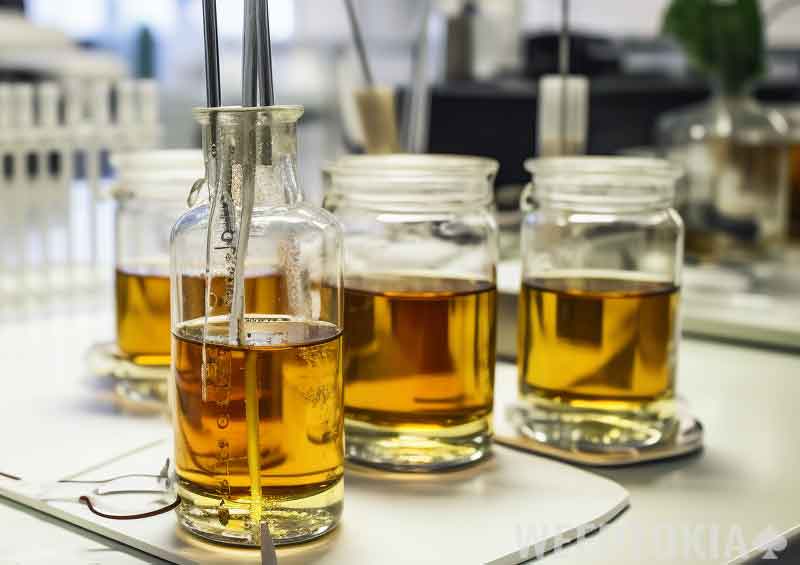
The process of distilling cannabis concentrates involves unique equipment designed specifically for distillation. This is because the extract from the first round of extraction is then heated into a vapor, and this is where things start to get super scientific.
Each cannabis compound, whether it be cannabinoids like THC or CBD, terpenes like myrcene and linalool, or flavonoids like cannflavin A or cannflavin B, all have different boiling points. Without getting too deep into the science of condensation and molecular conversion, the THC molecule, for example, is going to convert from a liquid form into a vapor form at a specific temperature.
Other cannabinoids like CBD, or terpenes like linalool, are also going to convert from a liquid form into a vapor form, but at different temperatures. Once the target compound is identified, be it THC, linalool, or whatever else the temperatures have been set at to convert the target compound into a vapor.
Once the target compound has been converted to a vapor using the right temperature setting, the vapor is trapped in another vessel where it has time to cool down. As the extracted vapor cools down, condensation sets in and it condenses back into a liquid form, usually slowly into another collection vessel through condensation coils.
The resulting extract after distillation is a thick and sticky liquid full of the specific compound that was targeted for extraction, like THC. When extracting cannabinoids like THC using distillation, the precision of boiling point temperature allows extractors to have a final product with extremely high potency and supreme purity.
Since other cannabinoids and terpenes have different boiling points, they are essentially removed or not collected as part of the distillation process. This makes cannabis distillates one of the purest forms of cannabis concentrates not the market, which brings us right into the benefits of distillate.
Distillate Benefits Explained
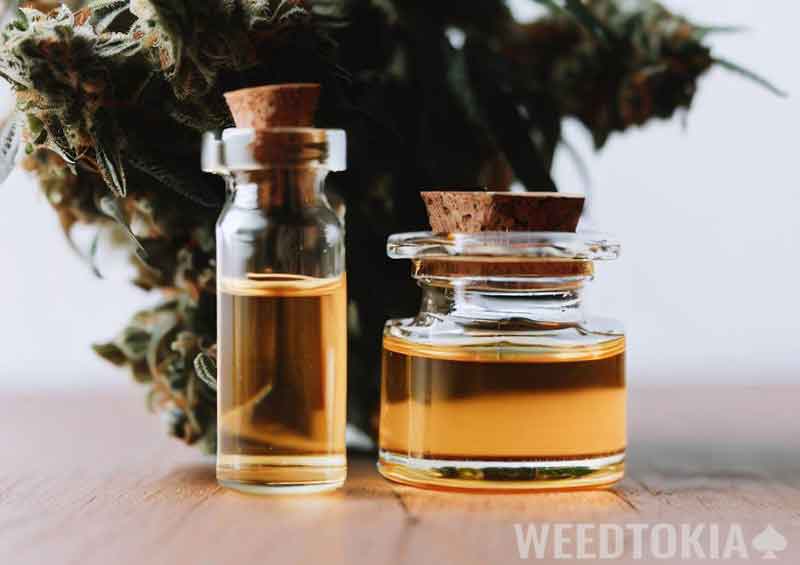
Being so pure is one of the biggest benefits of distillate. THC distillate is great for people wanting to consume high percentages of one cannabinoid, like if you wanted THC and only THC. On the other hand, there are people who don’t like the sense of euphoria that comes from the high associated with THC.
A CBD distillate is great for people who are interested in the benefits of cannabinoids but don’t want to feel the effects of THC. Anyone looking for high doses of pure CBD should consider a CBD distillate.
This puts purity and cannabinoid isolation as two of the most talked-about benefits of distillate for consumers and extractors, but the potency is another distillate benefit consumers can take advantage of. Because compounds are separated, the final distillate product contains highly concentrated amounts of the target compound.
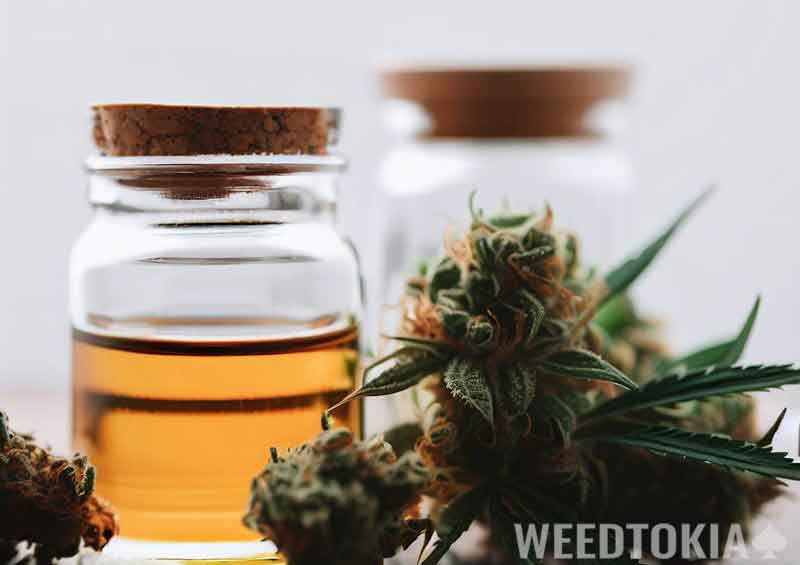
If that compound is THC, for example, then the distillate can have THC percentages in the high 90s. This high level of potency in distillates is a benefit that gives consumers what they’re looking for if they’re in search of powerful doses. It also gives extractors an incentive to create distillates because potent products are known to pack potent profits.
Distillate Uses
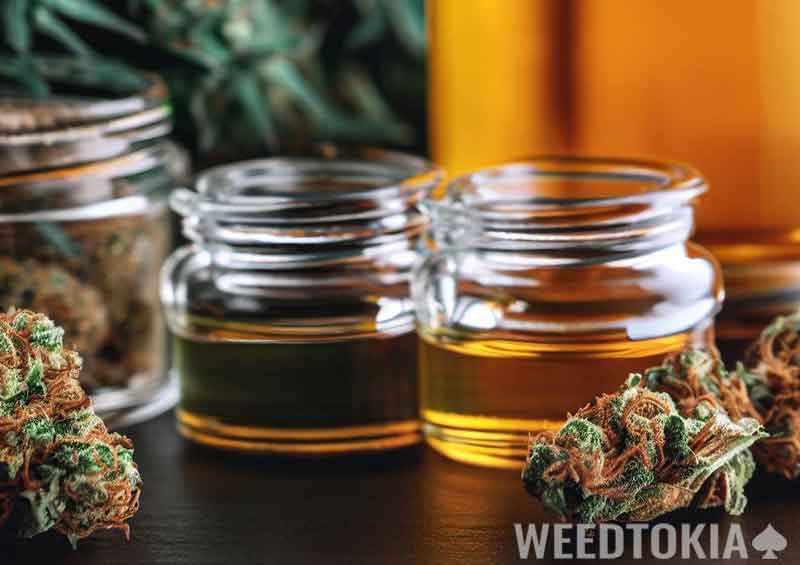
Distillate is used for the same reasons we discussed about live resin and other concentrates. It is used to treat medical conditions and can be consumed recreationally. Medical patients and recreational consumers both enjoy using distillates for their high potency. With percentages in the high 90s, you don’t have to consume a lot of distillate to experience the powerful effects.
On the other hand, as we talked about earlier, some people don’t want any powerful effects like those commonly known to be a result of THC. This is where the targeted isolation of other cannabinoids through distillation, like CBD, gives it another added benefit to consumers. When using a CBD distillate, you can trust it to give you all the benefits of CBD without any of the effects of other cannabinoids like THC.
How To Consume Distillate?

One of the unique characteristics of distillate is how it can be consumed. When the distillation process is focused on isolating cannabinoids like THC or CBD, the left-over distillate products have very few, if any, terpenes or flavonoids. This is a factor that adds to their level of purity.
Being almost void of terpenes and flavonoids, distillates have almost no detectable aroma or taste. This makes distillates unique from other concentrates like live resin, which are known for having pungent aromas and tastes from their highly potent terpene and flavonoid profiles.
The thing is, having essentially no taste or smell makes distillate a perfect product to be added to other cannabis products, including edibles, topicals, and oils. Not tasting like anything makes distillate great for adding to edibles because it provides the benefits of cannabinoids while letting the flavor of the food it’s infusing take center stage.
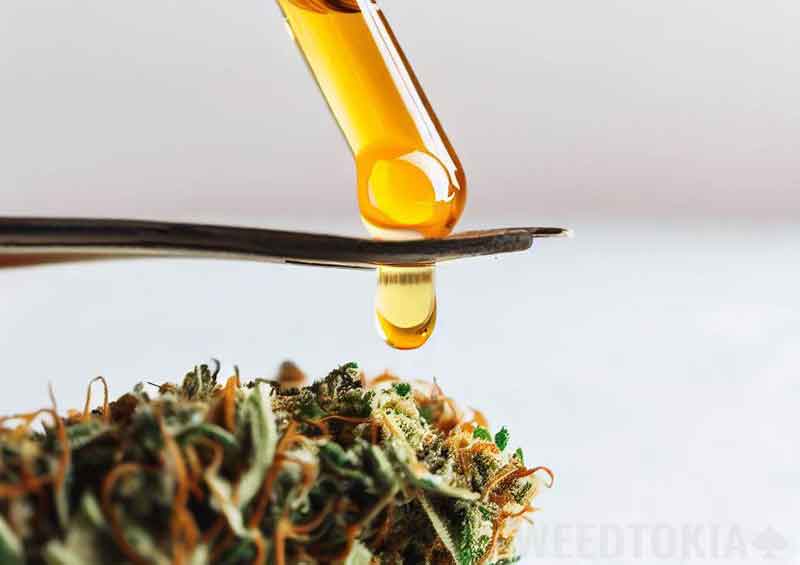
Fun Fact: This is why many top-level cannabis chefs will prepare everything from simple street food to intricate gourmet-style meals using distillate to infuse the dishes. You may have seen this for yourself on an episode of Cooked with Cannabis, a cannabis cooking competition on Netflix where cannabis chefs compete for cash while creating elevated cannabis cuisine.
One more way to consume a distillate is to eat it plain, which some people do choose to do. The heating stage of the distillation process decarboxylates the cannabinoids. Decarboxylation activates certain effects, like the availability of the psychoactive effects of THC, but that’s a detailed process best saved for another time.
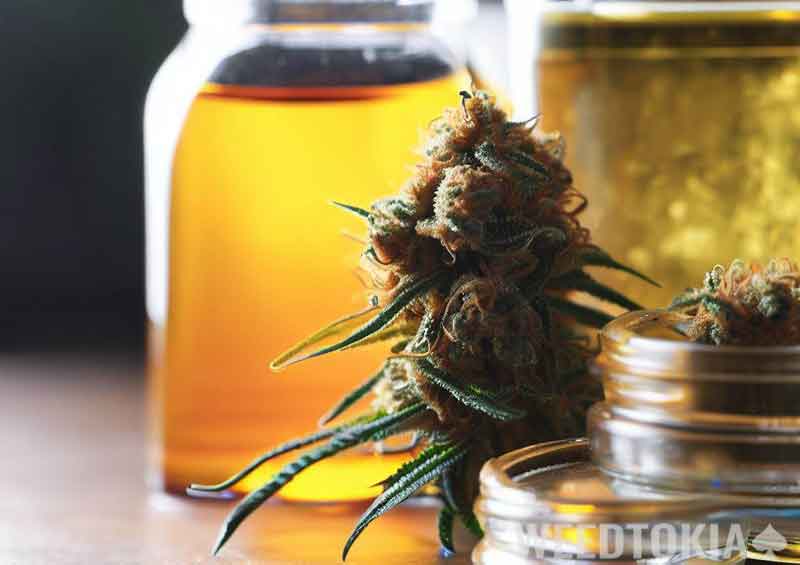
Basically, THC isn’t psychoactive unless it’s been decarboxylated, which usually happens when you smoke cannabis flower or heat a dab rig. You can think of it like no heat, no high. You may also consume distillate just like you do live resin, using the appropriate dabbing tools we talked about. Most people choose either an e-nail or a classic glass dab rig, but some people swear by distillate cartridges.
Distillate Cartridges Explained
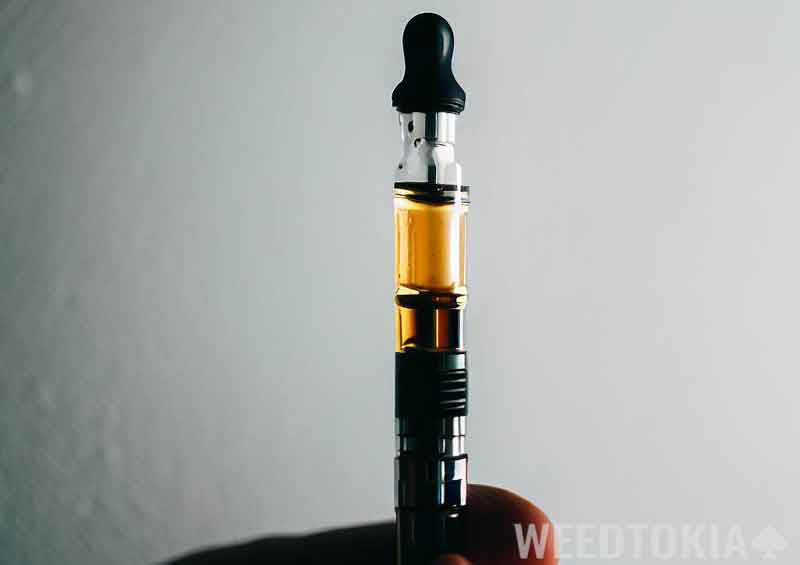
A distillate cartridge is just a cartridge filled with a distillate to be used with a vape pen or other vaporizer device that uses cartridges. The same sizing goes for distillate cartridges as we talked about with live resin cartridges, so remember that .510 is the most common thread.
If you’re unsure, you can always ask the people at the counter to check the size of your vape pen to make sure the cartridges they have are compatible. But wait, you’ve had distillate cartridges that had a lot of flavor or have at least seen some marketed as having a flavor.
How can a distillate cartridge have flavor if distillate doesn’t have terpenes or flavonoids? The answer is that terpenes and/or flavonoids are mixed with the distillate to add flavor. The reason why distillate cartridges have a great reputation for being so flavorful is that their original lack of flavor allows it to really take on and absorb the flavor of the terpenes they add to it.
Distillate Pros
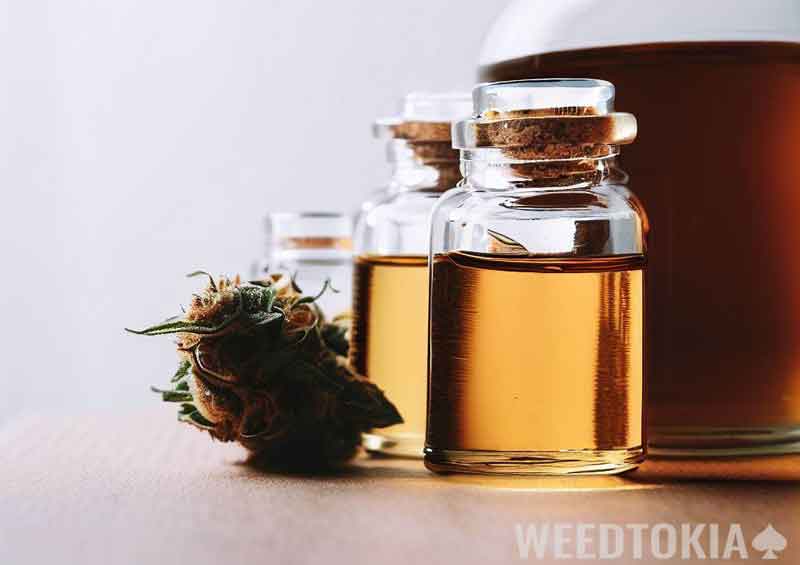
The pros of distillate are easy to recognize. The no-taste no-smell factors make it great for chefs to add to recipes without changing the flavor of their dishes, no matter what it is they’re cooking. The same goes for making edibles like chocolate bars that taste like chocolate and not cannabis.
The high potency of distillates is another big pro that wins over both medical and recreational consumers alike. Then there’s the purity of being able to take highly concentrated doses of just one specific cannabinoid like THC or CBD, allowing CBD only users to avoid any sort of high from THC.
Finally, we come back to the lack of flavor factor that allows distillate to absorb flavors and other terpene characteristics. This makes for some powerfully flavorful products.
Distillate Cons
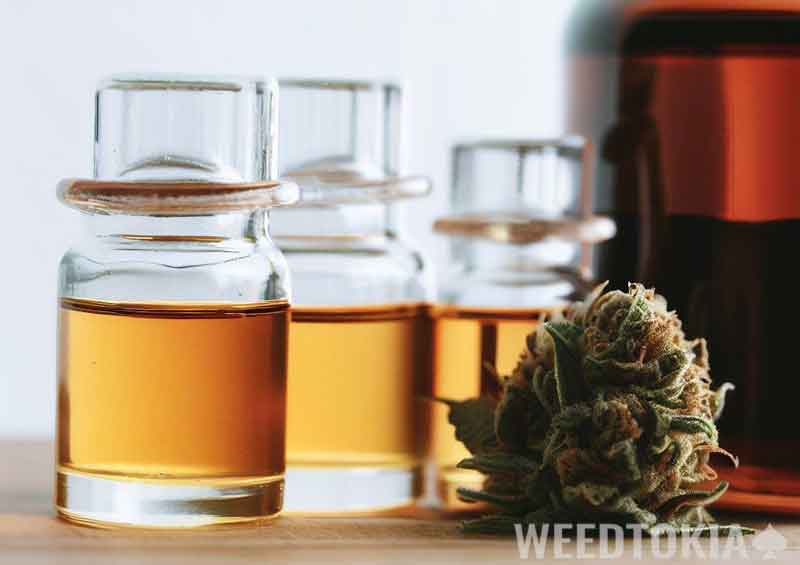
The cons of distillate remain a fairly short list. Distillates do start with chemical solvents as part of the extraction processes, so people who prefer solventless extraction will be in favor of distillate.
Distillate, like live resin, can be a little more expensive than some other concentrates because of the extra steps and equipment involved in making it. However, the purity and potency seem to be enough to keep consumers coming back for more.
Knowing the pros and cons of live resin and distillate can help you make an informed decision the next time you go to purchase a concentrate. Just remember not to let all of your cool new knowledge about live resin vs distillate go to your head.
TLDR: Live Resin Vs. Distillate
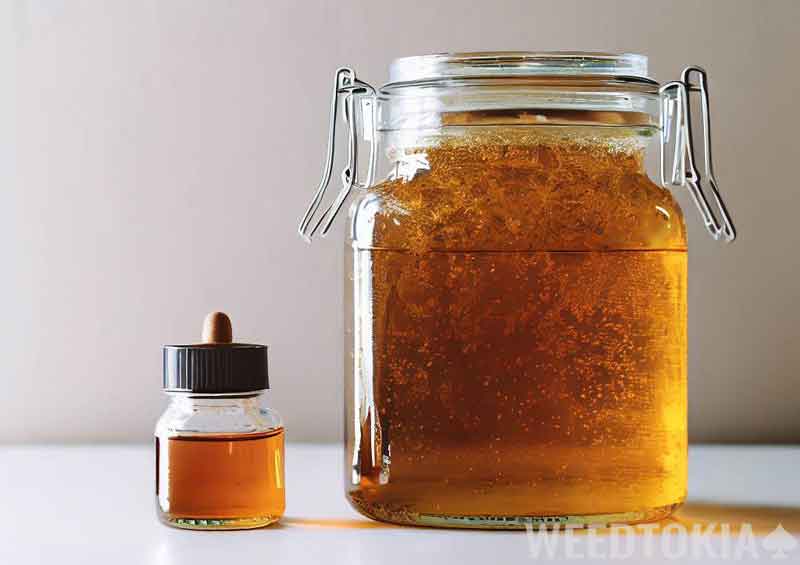
- Live Resin and Distillate are two different cannabis concentrates.
- Live Resin is made from fresh (mostly frozen) cannabis flowers, preserving terpenes and other compounds. This gives it a strong flavor.
- Distillate is made from refined cannabis oil and undergoes a secondary distillation process, resulting in a highly pure (high THC) concentrate.
- Live resin offers a fuller flavor profile and diverse effects, while distillate is known for higher THC content/potency.
- Both live resin and distillate have various uses in medical and recreational contexts. They can be consumed using Dab Rigs or vapes/cartridges.